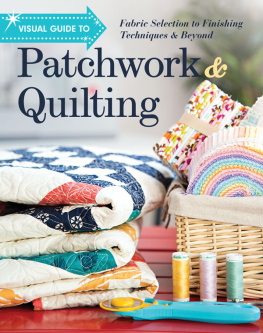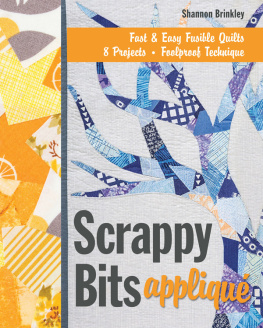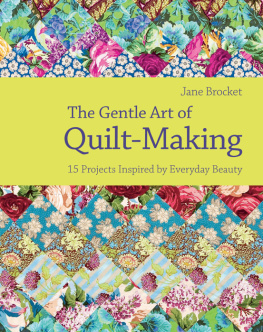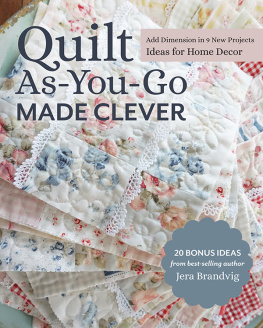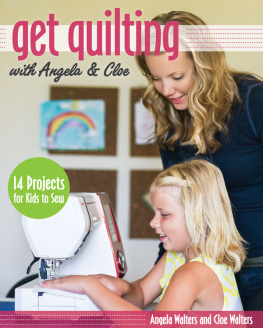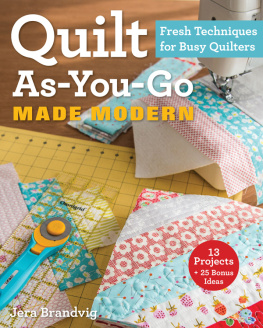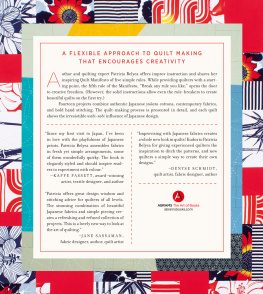Inspired
to
Q uilt

| Creative Experiments in Art Quilt Imagery |
Melanie Testa

Editor, Rebecca Campbell
Photography, Larry Stein
Cover and interior design, Connie Poole
Production, Katherine Jackson
2009 Melanie Testa
Photography and illustrations 2009 Interweave Press LLC
This digital eBook is for your private use only. It is not authorized
for any other use, including copying and distributing to others.
All rights reserved.


| Interweave Press LLC 201 East Fourth Street Loveland, CO 80537-5655 USA interweave.com |
Printed in China through Asia Pacific Offset.
Library of Congress Cataloging-in-Publication Data
Testa, Melanie.
Inspired to quilt : creative experiments in art quilt imagery / Melanie Testa.
p. cm.
Includes bibliographical references and index.
ISBN 978-1-59668-096-8 (pbk. : alk. paper)
ISBN 978-1-59668-984-8 (eBook)
1. Quilting. 2. Art quilts. I. Title.
TT835.T385 2009
746.46041--dc22
2008052938
10 9 8 7 6 5 4 3 2 1
Acknowledgements
David, without you, none of this would have come into being. Thank you for your belief, trust, and love. You make my life a joy. You are my home. My person. My dream. Words do not suffice.
This book would not have come to fruition without the fierce love of my good friend Lisa Chipetinethank you, Lisa.
It takes a mountain-top village to write a book. Alice Hill, Lynnae Ruske, Robin Sruoginis, and Sue Wilson, thank you for every helpful stitch. Thanks to Tim Williams, for helping keep my body aligned with my soul.
Pokey, thank you for asking me to join you for a glass of wine and for helping me get my act together. Rebecca, thank you for your kind prodding and gentle reminders. And to all the folks at Interweave, you all do fantastic work.
Last but not least, thanks to my Mom and Dad, for my work ethic and creative focus.
And thank you, good reader. Please remember it is not the supplies you collect but what you make of them. Make mistakes in blissful abandon; ease in the use of the media is your goal. Over time and with practice the wonder of the moment will shine through. Persist. Surround yourself in the works of artists greater than yourself, and you, too, will rise up among them. Start now.
contents
chapter 1 ::
THE FABRIC FOUNDATION
chapter 2 ::
TECHNIQUE APPLICATION
chapter 3 ::
CREATING QUILTS INSPIRED BY YOUR JOURNALS
chapter 4 ::
SANDWICHING AND QUILTING
chapter 5 ::
EMBELLISHMENT
chapter 6 ::
FINISHING
chapter 7 ::
SMALLWORKS, SERIES, AND EXPLORATION

Visual journals. These can be used as a place of release and relaxation and personal expression.
My first quilting class was traditional, teaching me the Log Cabin, Rose of Sharon, and Grandmothers Flower Garden patterns. I learned strip piecing, appliqu, and piecing corners. I was asked to frequent our local quilt store, where I purchased my first pair of scissors, a thimble, and, need I say, fabric? The fabrics bowled me over. I can recall the layout of the entire store, and I was given lessons on how to audition fabrics by taking the bolts off the shelves and leaning my groupings together, squinting my eyes, and then removing and replacing them with new bolts. You know the story. I had been bittenand hard!
Sunday afternoons became my day to sneak away from the family meal and go over to the quilt shop as soon as I could. I was nineteen years old. I located a guild through the local paper and found myself at their welcome table, only to be told there was a waiting list to get in! I wasnt to be deterred; I planted my feet, not understanding why the event had been advertised, and was allowed entry. A niggling thought kept popping into my mind: how about going to school to become a textile designer?
Monthly I returned to the guild; each and every program was better than the next. I soaked up all the information I could. Then there was a business meeting. The main topic of discussion was whether to continue offering a scholarship, which was intended to help a future student enter into a textile-related field. A light went on. I researched what needed to be done to gather a portfolio together, bought the needed art supplies, and began drawing anything and everything. I had always been creativebut not necessarily focused. It took a few years, but I was accepted into the Fashion Institute of Technologys Textile/Surface Design program at the ripe young age of twenty-seven, with the scholarship of my first guild!
While there, I was taught to use liquid watercolor in fashion design and gouache for use in home decor. I was encouraged to keep a visual journal, where ideas, snippets of magazine pages, feathers, and drawings could be stored for future inspiration. I graduated two years later with an associates degree.
If you have ever seen the movie The Devil Wears Prada, believe every moment of it. I was not fit for the competitive nature of the industry. So I found a job as a poster-restoration artist, where I furthered my skills in color mixing, utilized the availability of the works of art to saturate myself in the wide variety of drawing skills by the artists who originally drew and painted the posters. And I continued to journal. My drawing skills improved exponentially.
I took several classes by much-admired quilt artists in our community: Natasha Kempers-Cullens Design and Composition, David Walkers Reverse Machine Appliqu, Ann Johnstons Stamping with Dyes, Carol Soderlunds Color Mixing for Dyers, and Jane Dunnewolds Complex Cloth. I loved taking classes, as I think many of us do, but there came a day when I was a bit confused. I had a bunch of knowledge under my belt and admired the artwork of those who had so generously opened themselves and their approach to me. But I wanted to figure out how to take what I had learned and apply it to a style I could call my own.

Painting above, left side of binder, The Old Couple by Baptiste Ibar. Mixed media on canvas. 60" 48" (152 122 cm).
So I dumped my fabric stash out into the middle of the living room; I folded, admired, and evaluated my burgeoning stash of hand-dyed, stamped, monoprinted, and bleach-discharged fabrics. Once all was organized, I took out my journals and slowly flipped through the pages. Cleaning and organizing has a magical effect; you clean the external world and new pathways open internally. Thoughts you might not have been able to access emerge.
I made a list that looked something like this:
Journaling Techniques | Quilting Techniques |


